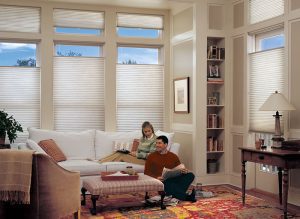In energy conservation and sustainability, the quest for efficiency extends beyond high-tech gadgets and renewable energy sources. Often overlooked, the windows in our homes play a pivotal role in energy management. From regulating temperature to controlling natural light, our window treatments and insulation choices can significantly impact energy-efficient window treatments and insulation within our living spaces.
As awareness grows regarding the environmental impact of energy usage, homeowners and builders are increasingly focusing on energy-efficient window treatments and insulation solutions. These innovations reduce energy bills and contribute to a more sustainable future by minimizing reliance on fossil fuels and reducing carbon footprints.
Understanding Energy Loss Through Windows
Windows are portals to the external environment, allowing light and heat to enter our homes. However, they are also significant energy loss points, particularly if not adequately insulated or treated. Inefficient windows can lead to heat gain in the summer and heat loss in the winter, forcing heating and cooling systems to work harder to maintain comfortable indoor temperatures.
The Role of Energy-Efficient Window Treatments
Energy-efficient window treatments act as barriers between the interior of a building and the external environment, helping to regulate temperature and light infiltration. Here are some popular options:

-
Insulated Curtains and Drapes:
Insulated curtains and drapes feature multiple layers of fabric with insulating materials sandwiched between them. These layers help to trap air and create a barrier against heat transfer, effectively reducing energy loss through windows.
-
Cellular Shades:
Also known as honeycomb shades, cellular shades feature a unique honeycomb structure that traps air, providing an additional layer of insulation. Homes may customize the amount of natural light that enters an area because they are available in various opacities.
-
Window Films:
Low-emissivity (low-E) window films are thin, transparent coatings applied to window glass to reduce heat transfer. These films reflect infrared radiation while allowing visible light to pass through, helping to keep interiors more relaxed in the summer and warmer in the winter.
-
Exterior Shades and Awnings:
Installing shades or awnings on the exterior of windows can block direct sunlight and reduce heat gain during the warmer months. This approach prevents solar heat from penetrating window glass, reducing the workload on air conditioning systems.
Enhancing Insulation Around Windows
In addition to energy-efficient window treatments, proper insulation around windows is crucial for maximizing energy savings and improving comfort levels indoors. Here are some insulation options to consider:
-
Weather Stripping:
Weatherstripping seals gaps and cracks around windows, preventing air leakage and reducing drafts. Common materials used for weather stripping include foam, felt, rubber, and vinyl, which provide an effective barrier against the elements.
-
Caulking:
Caulking is used to seal gaps and joints between window frames and walls. It forms a flexible, waterproof seal that prevents air infiltration and helps maintain consistent indoor temperatures.
-
Window Insulation Kits:
Window insulation kits consist of plastic shrink film applied over window openings and sealed with double-sided tape. When heated with a hairdryer, the film tightens, creating an airtight barrier that reduces heat loss and drafts.
Conclusion
Energy-efficient window treatments and insulation cannot be overstated as energy efficiency and sustainability demands continue to rise.